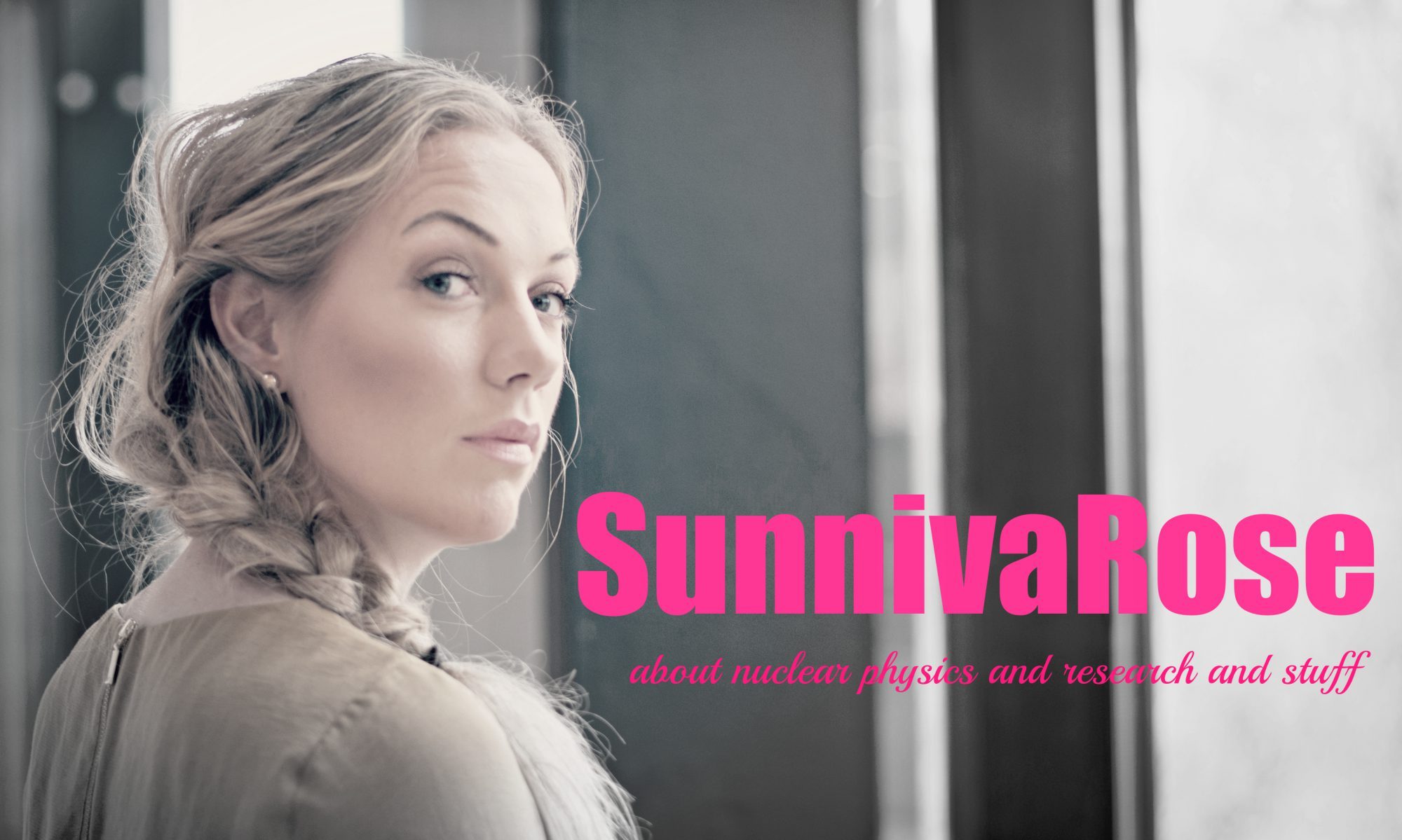Hi sweeties <3 Alexandra's been sick since Wednesday, poor girl, so I've spent most of the time taking care of her and comfort her. Therefore, again (!), this week's Friday Facts blogpost comes on a Sunday. Hope you understand...
This time I feel the need of giving you ten facts about my favourite particle - the neutron:
This time I feel the need of giving you ten facts about my favourite particle - the neutron:
- neutrons are radioactive if they are "free" (alone, and not part of the nucleus of an atom)
- neutrons have no charge - they are neutral, and can therefore "sneak" into another nucleus, and for example make it fission 😀
- the recipe for a neutron is: 2 down quarks and 1 up quark (opposite to the proton that is made up of 2 ups and 1 down)
- the half-life of a (free) neutron is about 10.2 minutes, and then it turns into a proton, and electron, and an anti neutrino. Meaning it beta decays 😀
- the neutron was discovered by James Chadwick in 1932
- neutrons have a mass, which is almost equal to the proton, but the neutron is a little bit heavier. Actually the mass of the neutron is 1.674927471×10−27 kg (or 0.00000000000000000000000000164927471 kg), and that's the same as 2.5 electron masses (electrons weigh really little) more than a proton
- neutrons can make stuff radioactive - which is called neutron activation; so a normal, stable gold nucleus can for example be activated by a neutron and go from gold-197 (stable) into gold-198 (un stable) and then decay into mercury-198, which is stable
- you can't make a nucleus entirely out of neutrons - you have to have at least one proton too, and then you have deuteron, or heavy hydrogen
- number 8 is actually just sort of true; you can go to an extreme, and calculate how many neutrons you need to make a "nucleus" entirely out of neutrons (since neutrons have no charge, they don't repel each other, like protons do, but they don't stick together either - a little bit like two pieces of paper; if you put them together they will just fall apart), and since they do have a mass they will attract each other because of gravity between them. This means that if you have enough neutrons, you will make something that won't just fall apart; and that number is . Not exactly nuclear size...:P (Read more about that HERE)
- when neutrons hit you, they will give you a dose that is dependant on their energy. The highest dose from a neutron comes when it has an energy of 1 million electron volts. If the neutron has lower or higher energy, the dose from it will be lower.
For some reason I imagine neutrons to be white 😛 How do you imagine the neutron to look?


this article is very helpful to my organic chemistry class thanks. so much. 🙂
Wow thanks so much I think the nuutron is my favorite particle too 😀😝 hope Alexandria feels better, love that girl. XOXO❤️😘
Hi sweaties!! It is MY favorite Partikle two !!😋🥰😉😆 I really liked the part that u talked about the nuutrons SNEAKING in to a nother NUucLeas! LOV U XOXO PEACE OUT✌️✌️